Overview:
3D renderings help sell properties faster by providing immersive, high-quality visualizations that enhance buyer engagement and facilitate informed decision-making. The article supports this by showcasing case studies where the use of 3D visuals resulted in significant increases in sales speed and property value, demonstrating their effectiveness in capturing buyer interest and improving marketing strategies.
Introduction
The integration of 3D rendering technology is revolutionizing the real estate sector, offering unprecedented opportunities for visual storytelling and marketing. By transforming abstract architectural concepts into vivid, lifelike representations, 3D renderings enable potential buyers to fully immerse themselves in properties long before they are physically constructed.
This shift from traditional 2D images to dynamic visualizations not only enhances the aesthetic appeal of listings but also serves as a critical communication tool, aligning the expectations of buyers, developers, and stakeholders.
As the demand for compelling visual content continues to rise, understanding the profound impact and strategic advantages of 3D rendering becomes essential for real estate professionals seeking to thrive in a competitive marketplace.
Through a deep dive into its benefits, real-world applications, and emerging trends, this article explores how 3D rendering is not merely an enhancement but a fundamental game changer in real estate marketing and sales.
Understanding 3D Rendering: A Game Changer for Real Estate Sales
3D visualization is fundamentally changing the property market by providing high-fidelity representations that allow potential customers to imagine buildings prior to their construction. Unlike traditional 2D illustrations or static photographs, 3D visuals create lifelike representations of spaces, intricately showcasing design elements, lighting, and material textures in a way that captivates buyers’ senses. This advanced technology not only enhances the aesthetic charm of listings but also effectively conveys the vision of a property, establishing itself as a crucial asset in property marketing.
With the capability to promote real estate to a worldwide audience, 3D visualization significantly expands the reach of property listings. By seamlessly bridging the gap between conceptualization and reality, 3D visuals emerge as indispensable tools for realtors and architects, facilitating informed decision-making and fostering a deeper emotional connection to the property. Furthermore, as demonstrated by case studies on effective pre-construction marketing, including:
- A 30% increase in investment interest
- A 25% reduction in sales time
3D visualization proves its value in boosting project confidence and attracting investment, showcasing envisioned final products for properties in the pre-construction phase, ultimately generating anticipation and interest among potential buyers.
As one expert noted, ‘3D visualization offers substantial ROI in real estate through faster sales, enhanced marketing, improved customer engagement, and significant cost savings.’ By offering clarity and certainty, 3D visuals also improve communication with builders, lenders, municipalities, and other stakeholders, ensuring that all parties are aligned and informed throughout the development process.
Real-World Examples: How 3D Renderings Accelerate Property Sales
Numerous case studies vividly demonstrate examples of how 3D renderings help sell properties faster and enhance project confidence. For instance, a prominent real estate developer in Washington state struggled with low-quality architectural renders that failed to engage potential clients, thereby hindering financing and increasing the risk of unsold inventory. By implementing Property Visualizer’s photorealistic architectural renders and unique 3D home tours, the developer provided clear examples of how 3D renderings help sell properties faster, successfully selling the property 20% faster, with the selling price increasing by up to $300,000.
Similarly, a luxury residential project in Miami utilized immersive 3D visualizations, which are examples of how 3D renderings help sell properties faster, effectively engaging potential clients prior to construction commencement and resulting in an impressive 30% increase in pre-sales compared to previous developments. In another instance, a commercial property in New York showcased its potential using detailed 3D images, which are prime examples of how 3D renderings help sell properties faster, resulting in a significantly accelerated lease signing process. With more than 1,000 property developers relying on Property Visualizer, these persuasive instances provide examples of how 3D renderings help sell properties faster by creating interest and encouraging quicker decision-making among potential buyers, ultimately improving the sales process and generating essential revenue.
Emma S., a seasoned property developer, remarked, ‘The Unique 3D Tour provided clear examples of how 3D renderings help sell properties faster, and the communication with the project manager ensured a smooth process from start to finish.’ Highly recommend! This narrative resonates with the core values emphasized by leading firms in the industry, highlighting the importance of innovation in architectural visualization and the role of trust and reliability in client partnerships, which affirm the excellence of J. Scott Smith Visual Designs.
The Benefits of 3D Renderings in Real Estate Marketing
The adoption of 3D renderings in real estate marketing strategies provides examples of how 3D renderings help sell properties faster, presenting a range of significant advantages by enhancing property value through visual appeal and market differentiation. Primarily, these visualizations are excellent examples of how 3D renderings help sell properties faster by enhancing customer engagement through immersive experiences that traditional photographs cannot replicate. Significantly, 80 percent of purchasers indicate they would switch to agents offering 3D tours, underscoring the competitive necessity of adopting this technology.
This heightened engagement translates to a marked increase in inquiries and property viewings. Moreover, the use of examples of how 3D renderings help sell properties faster enables prospective clients to imagine spaces and arrangements within a realistic context, enhancing decision-making and instilling confidence in their purchasing selections. These representations can also be tailored to display different design choices, addressing personal tastes and improving the customer experience.
According to Harvard Business Review, shoppers who viewed AR not only explored more products but also spent more time browsing the website, emphasizing the effectiveness of 3D visualizations in captivating buyer interest. The ease with which these representations can be disseminated across various digital platforms further amplifies their reach, attracting a wider audience. As industry trends suggest, the global 3D imaging market is anticipated to soar to $5.63 billion by 2025, driven by growing demand for advanced product visualization features in an increasingly digital marketplace.
Despite this growth, experts believe the use of 3D visuals is still in its infancy, suggesting significant potential for future advancements. As a result, investing in high-quality 3D visuals serves as examples of how 3D renderings help sell properties faster, simplifying the selling process and improving the overall efficiency of property marketing strategies in 2024 and beyond, making it a vital element for informed decision-making and generating enthusiasm about projects.
Technological Innovations Driving 3D Rendering in Real Estate
Recent advancements in technology are significantly enhancing the capabilities of 3D visualization within the real estate sector. The integration of automation tools and AI-driven software not only streamlines the process but also enhances the precision and detail in exterior visuals, which are crucial for capturing the essence of architectural designs. For instance, contemporary software utilizing machine learning can automatically calibrate lighting and textures based on varying environmental conditions, producing visuals that closely replicate the final product.
This increasing demand for photorealistic imagery reflects client expectations for highly realistic and detailed visualizations, which are examples of how 3D renderings help sell properties faster by effectively conveying unique features and ambiance. Moreover, the integration of virtual reality (VR) and augmented reality (AR) technologies with 3D visuals provides clear examples of how 3D renderings help sell properties faster, enabling prospective customers to embark on immersive virtual tours of properties from nearly any location, thus enhancing client connection and satisfaction. These technological innovations not only enhance the customer experience but also provide examples of how 3D renderings help sell properties faster, allowing realtors and developers to showcase properties more compellingly, thereby improving stakeholder communication and eliminating design misunderstandings.
3D visualizations serve as examples of how 3D renderings help sell properties faster, telling a compelling story that sells not just homes but futures, while making it easier to communicate design intent with builders, lenders, and municipalities. As emphasized by industry specialists, these enhancements drive excellence in marketing strategies, providing examples of how 3D renderings help sell properties faster by ensuring that unique features are effectively communicated, thus aiding clients in making informed decisions and enhancing pre-selling efforts. Additionally, the availability of accessible tools, which may cost around Rs. 100.00 per accessory, offers realtors the tools to enhance their presentations and engage potential clients more effectively.
The Future of 3D Rendering: Trends and Challenges in Real Estate
The evolution of the real estate landscape has significantly transformed the role of 3D visualization, with numerous examples of how 3D renderings help sell properties faster, making it a vital tool for architects and real estate professionals. Current trends indicate an increasing focus on personalization, where designs are meticulously crafted to resonate with specific buyer demographics, catering to their unique preferences and lifestyles. This customization is essential in determining investment for unique visualization projects, as it allows for revisions that enhance the emotional impact and realism of each representation, akin to brushstrokes in a larger artistic picture.
Notably, high-quality visual representations play an essential role in project development and decision-making, showcasing intricate details that breathe life into architectural visions. As of July 2016, there has been a notable rise in the adoption of these technologies, underscoring their growing importance in the industry. Coupled with the rising significance of sustainability, there is a soaring demand for eco-friendly design visualizations that effectively showcase energy-efficient features, aligning with buyer expectations and emphasizing the commitment to responsible design practices.
As Barbara Corcoran aptly stated, ‘They became popular because their content is authentic, relatable, and helpful.’ Nonetheless, challenges persist; continuous technological adaptation is crucial to keep pace with advancements in technology, while the potential for market saturation raises concerns as more firms adopt these capabilities. Moreover, the function of townhome visuals as a crucial marketing instrument in property development serves as examples of how 3D renderings help sell properties faster; they improve interaction between homeowners and constructors, highlighting natural lighting, landscaping, and building materials for contextual visualization.
This marketing power is vital for effectively conveying examples of how 3D renderings help sell properties faster in the unique aspects of townhome projects. The case study on accessibility and inclusivity in architectural visualization services serves as a prime example of how advanced visualization tools can simulate accessible spaces, demonstrating a commitment to creating environments that are welcoming and functional for all. This trend of inclusivity directly ties into the personalization and sustainability movements, as it showcases a broader understanding of diverse needs and responsible design.
Navigating these trends and challenges will be imperative for real estate professionals aiming to leverage examples of how 3D renderings help sell properties faster in the competitive landscape of 2024.
Conclusion
The integration of 3D rendering technology represents a transformative shift in the real estate sector, significantly enhancing the marketing and sales processes. By providing high-fidelity visualizations, this technology enables potential buyers to engage with properties in a way that traditional methods cannot replicate. The ability to visualize architectural designs in lifelike detail fosters emotional connections and informed decision-making, ultimately leading to faster sales and increased investment interest.
Real-world examples illustrate the profound impact of 3D renderings on property sales, with numerous case studies showcasing accelerated sales processes and heightened buyer engagement. As the demand for immersive experiences grows, real estate professionals are increasingly recognizing the necessity of incorporating 3D visualizations into their marketing strategies. The potential for customization tailored to specific buyer demographics further emphasizes the importance of this technology in achieving market differentiation and enhancing property value.
Technological advancements, including the incorporation of AI, virtual reality, and augmented reality, are continually enhancing the capabilities of 3D rendering. These innovations not only improve the precision and detail of visualizations but also facilitate effective communication among stakeholders. As the real estate landscape evolves, embracing these tools will be essential for professionals aiming to stay competitive.
Looking to the future, the trends of personalization, sustainability, and inclusivity will play crucial roles in shaping the use of 3D renderings. Navigating these trends, while addressing the challenges posed by rapid technological change and potential market saturation, will be vital for real estate professionals committed to leveraging 3D rendering as a cornerstone of their marketing efforts. By doing so, they can ensure that their strategies remain relevant and effective in an increasingly digital marketplace.
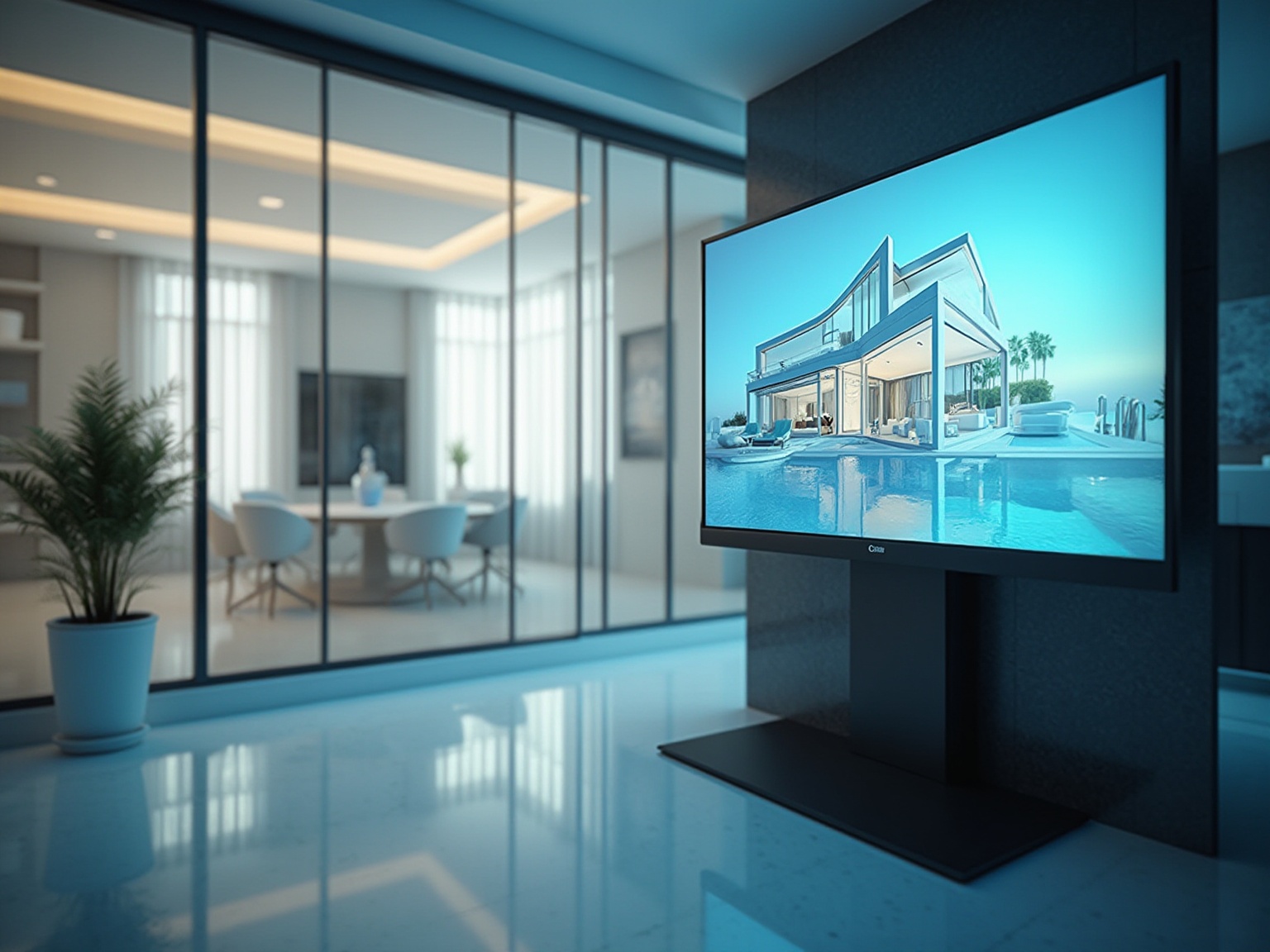
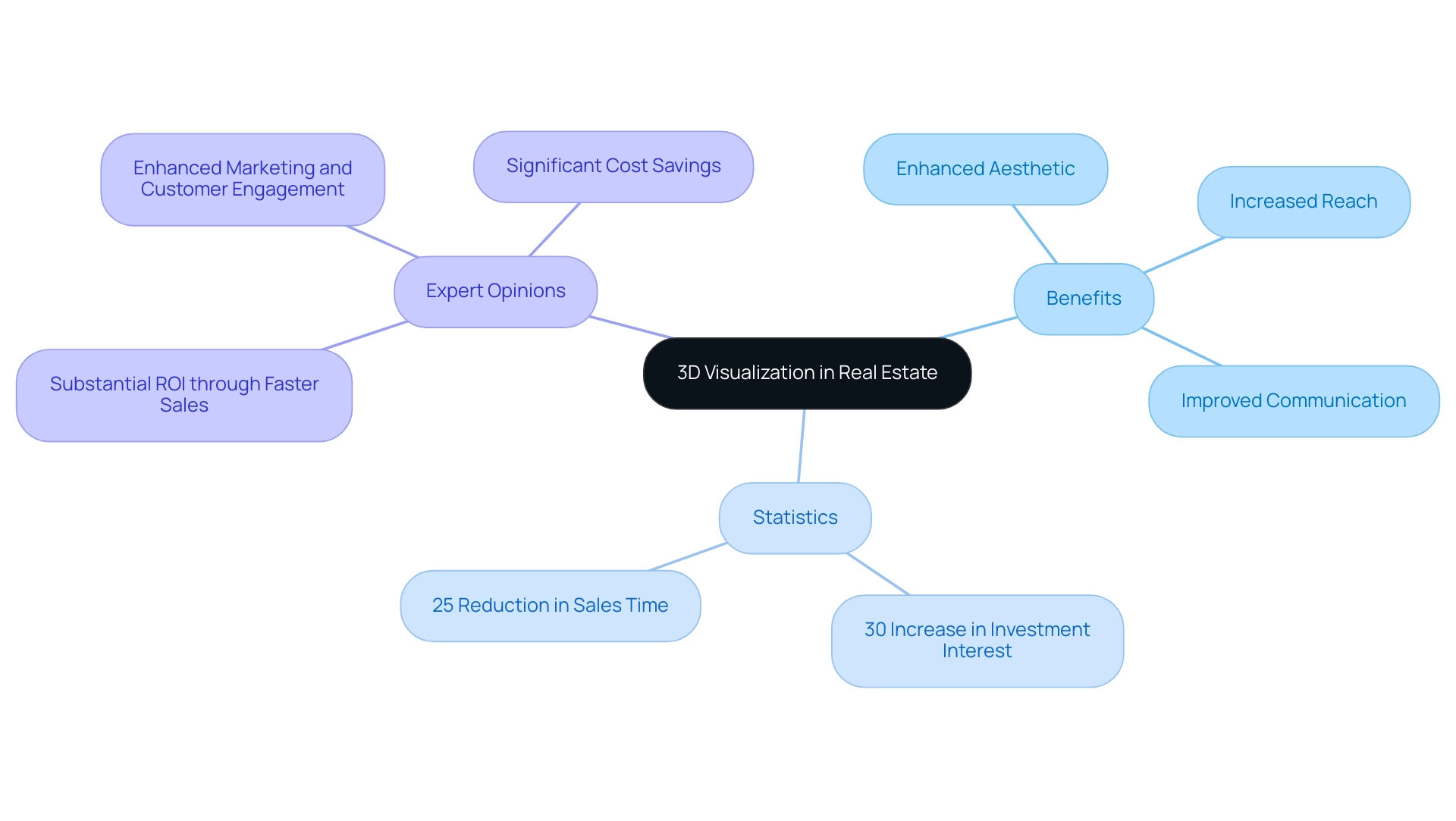
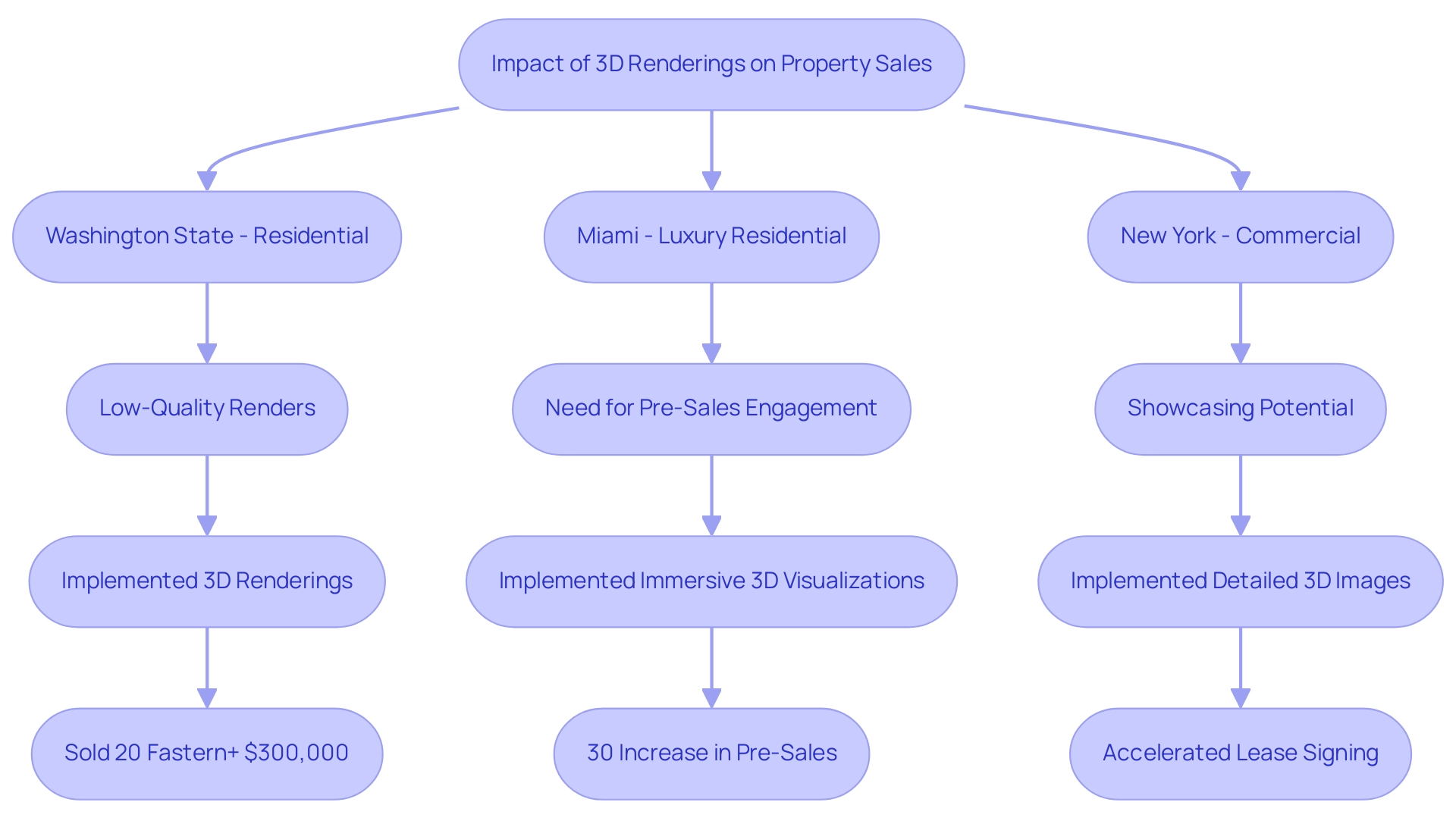

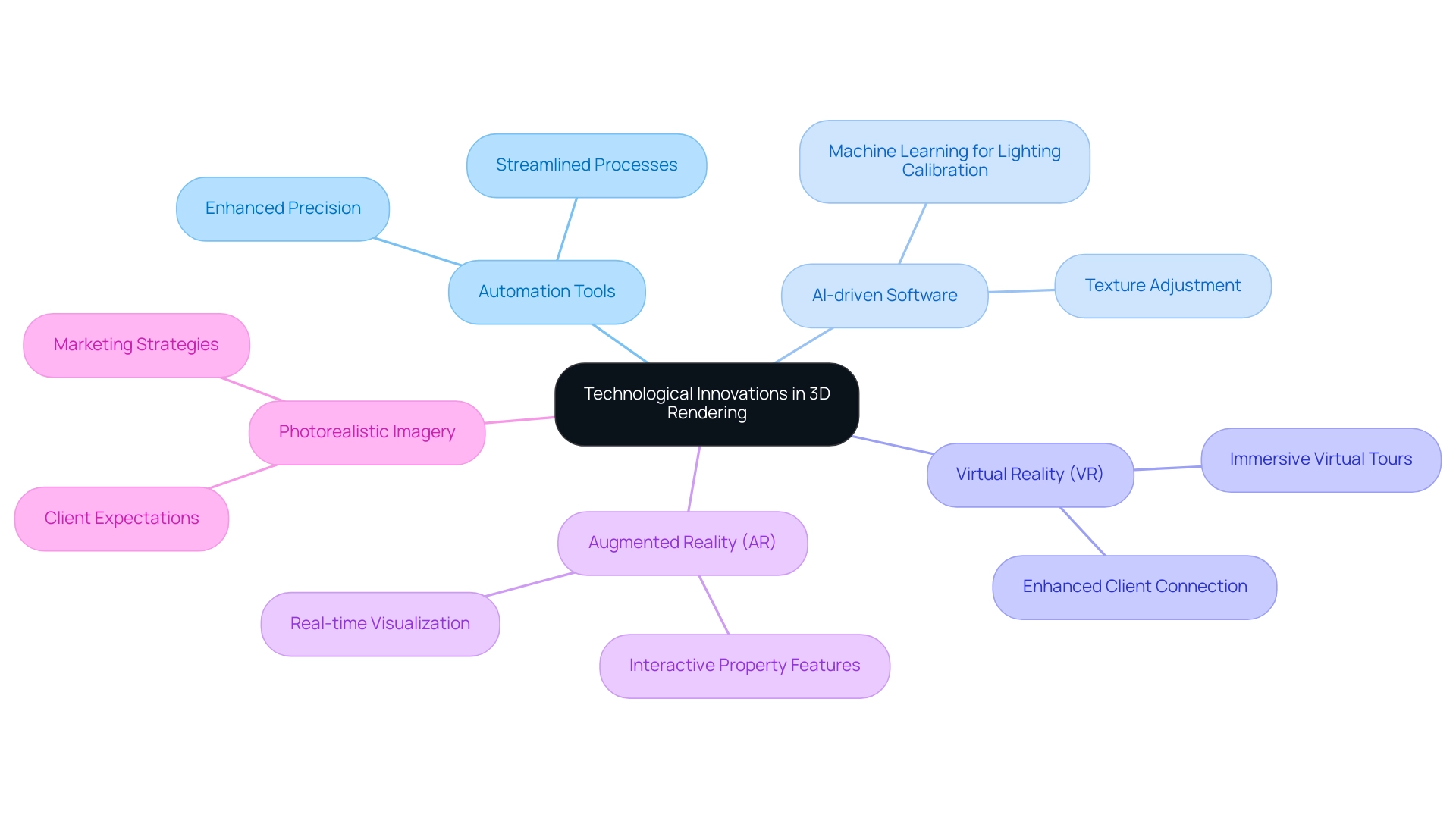
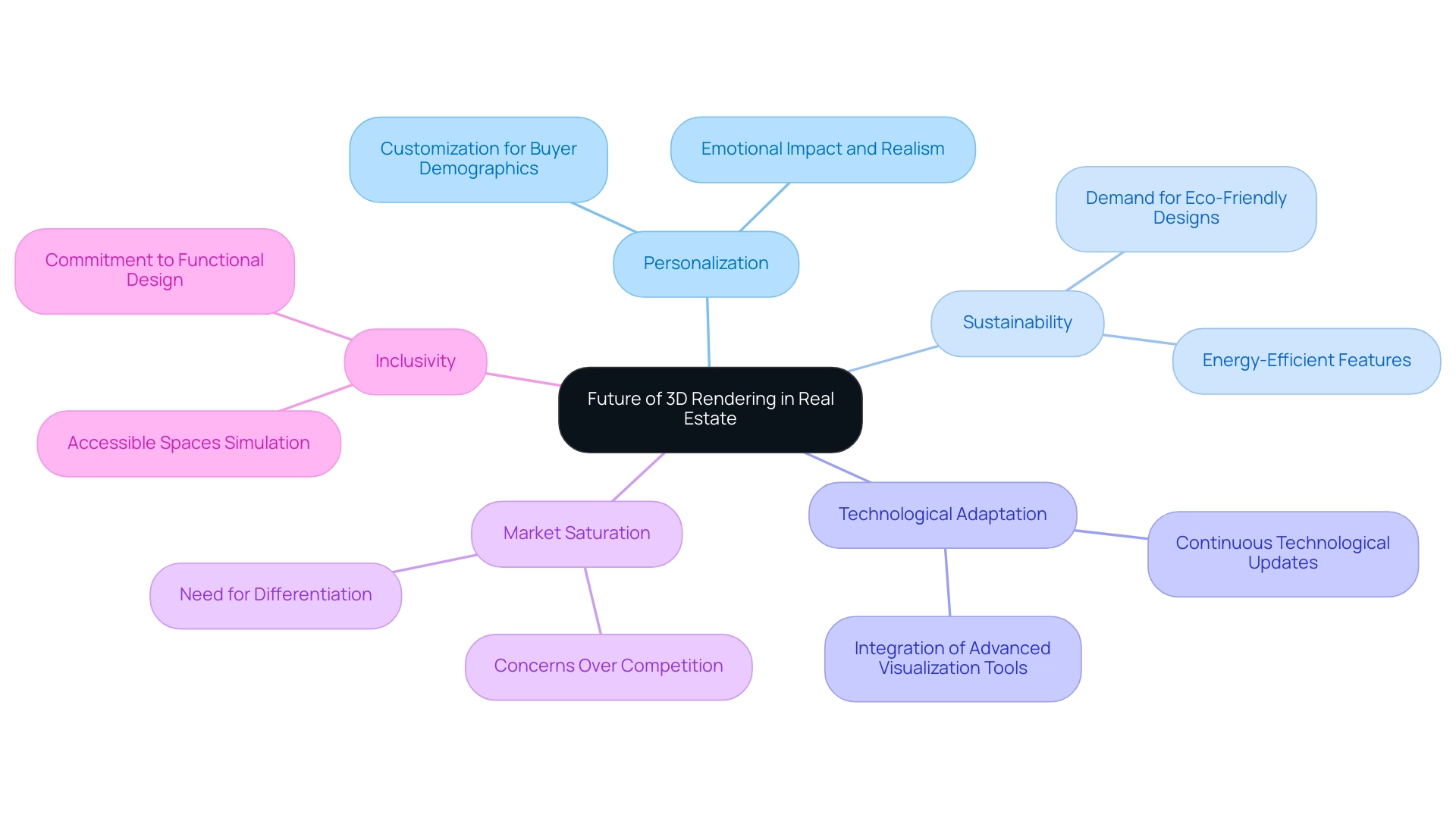
0 Comments